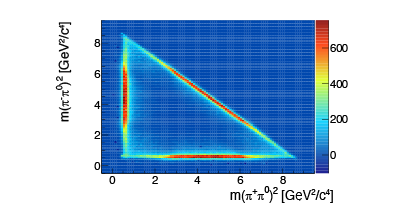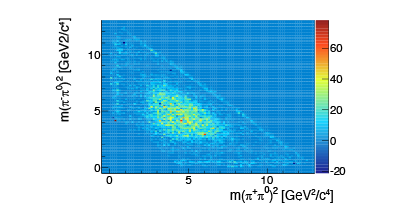
Despite decades of effort, the spectrum of QCD bound states is still poorly understood. Even one of the simplest possible systems, namely a bound state of a charm and an anti-charm quark (charmonium) presents a wealth of open questions. The completely different branching fractions and decay dynamics for J/ψ → ρπ and ψ’ → ρπ (the “ρπ-puzzle”, see Figure) are one such question, the nature of the recently discovered “X-Y-Z states” being another one.


The large data samples produced by the Beijing Electron-Positron Collider (BEPC) II and recorded by the Beijing Spectrometer (BES) III experiment provide a handle for addressing these questions. As a postdoc in Beijing, Niklaus Berger produced the most precise measurement of the branching fractions of J/ψ → π+π-π0 and ψ’ → π+π-π0, in order to gain insights into the ρπ-puzzle however, a more detailed study involving a partial wave analysis (also known as amplitude analysis) is necessary. The relatively simple topology in conjunction with the large statistics available make these channels an ideal test-bed for applying approaches going beyond the simple isobar model traditionally applied. Including e.g. re-scattering in the model is possible and could be important.
More involved models combined with large statistics can easily lead to very large computation times. Applying massively parallel computing e.g. on GPUs can circumvent this bottleneck and allows for short turnaround times.
We have thus joined the BES III collaboration, harnessing the synergies of a close collaboration with the other BES III groups in Mainz. In a first step, we plan to establish a high performance partial wave analysis of the J/ψ → π+π-π0 and
ψ’ → π+π-π0 using the best available models of the decay dynamics. This would serve as a starting point for understanding both the “old” and the “new” (X, Y, Z) parts of the charmonium spectrum through decay dynamics.

